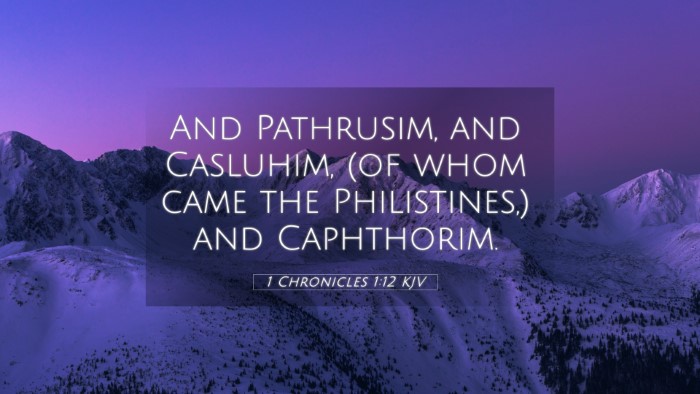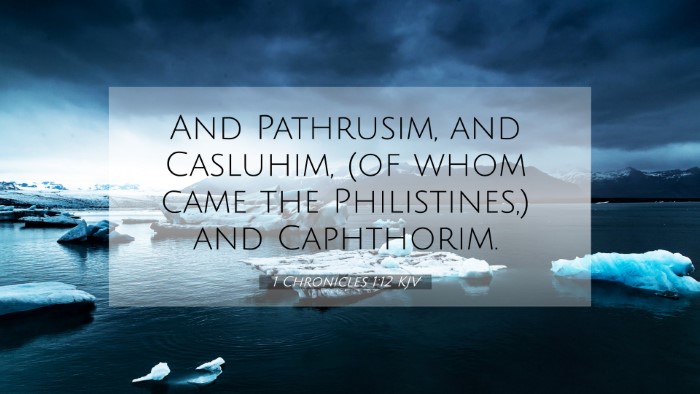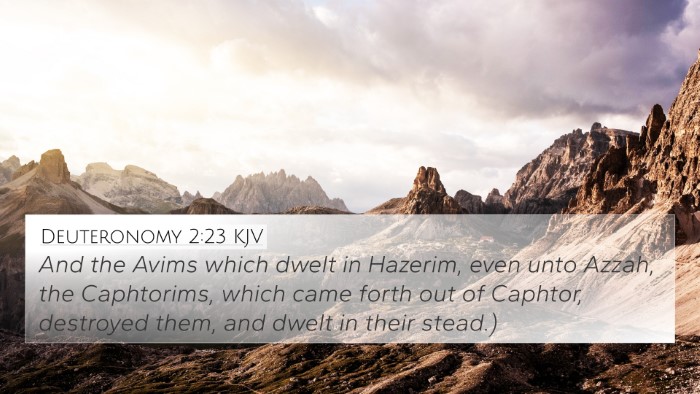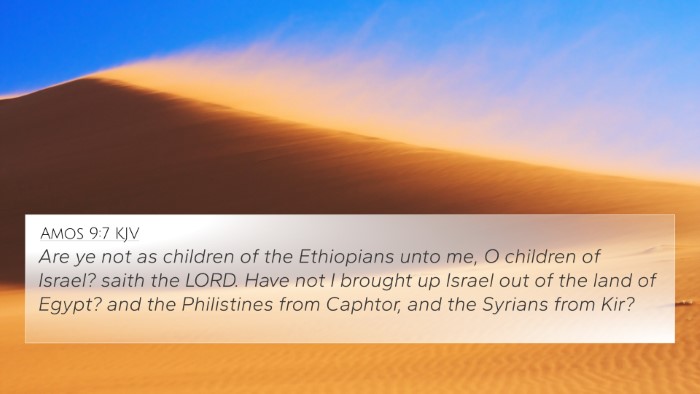Understanding 1 Chronicles 1:12
1 Chronicles 1:12 states: "And Pathrusim, and Casluhim, (of whom came the Philistines,) and Caphthorim." This verse is a part of the genealogical records found in the Book of Chronicles, highlighting the descendants of Noah through Noah's son Ham. The context and significance of this verse can be explored through various public domain commentaries. Below is an interpretation that combines insights from Matthew Henry, Albert Barnes, and Adam Clarke.
Genealogical Significance
This verse serves as a transition in the genealogical account, noting specific clans that emerged from the descendants of Ham. It emphasizes the need for understanding one's heritage and the historical context of the Israelite people.
Insights from Public Domain Commentaries
-
Matthew Henry:
Henry notes that the genealogies in Chronicles serve to remind the Israelites of their roots and the divine plan woven through history. The mention of the Philistines indicates the historical enmity between Israel and this group, originating from the descendants of Casluhim.
-
Albert Barnes:
Barnes emphasizes the significance of placing the Philistines within the context of the ancestral lines. He suggests that these names indicate the migration patterns and territorial claims that shaped early civilizations around Israel. The relationships and divisions of these groups foreshadow Israel’s future conflicts and interactions.
-
Adam Clarke:
Clarke delves into the definitions and identities of these tribes. He highlights the Philistines' important role in the narrative of the Israelites, detailing how their presence posed a continuous threat. By listing these descendants, the text establishes a historical framework for understanding the events that would unfold later in Israel's history.
Connections with Other Bible Verses
To enhance the understanding of 1 Chronicles 1:12, we can identify several relevant cross-references:
- Genesis 10:6-14: The Table of Nations, which outlines the descendants of Noah.
- Exodus 13:17: References the Philistines and God's plan for Israel's journey.
- 1 Samuel 4:1: Chronicles early confrontations between the Israelites and the Philistines.
- Judges 14:1: Discusses Samson's interactions with the Philistines, illustrating ongoing conflict.
- Amos 9:7: A prophetic mention of how God views the Philistines and their relation to Israel.
- Psalms 78:65: References God's deliverance from Philistine oppression.
- Jeremiah 47:1-7: Prophecies concerning the Philistines and their fate.
Thematic Connections
This verse encapsulates themes of heritage, conflict, and divine sovereignty. Understanding the historical context aids in recognizing how these issues shape biblical narratives. By cross-referencing with these other scriptures, we see an ongoing conversation concerning the relationship between Israel and the Philistines, as well as God's overarching plan for His people.
Cross-Referencing Biblical Texts
Exploring cross-references can provide deeper insights into the connections between verses and themes, enhancing the study of scripture. Here are some tools and methods to assist with cross-referencing:
- Bible Concordance: Useful for finding specific words and their occurrences in the Bible.
- Bible Cross-Reference Guide: Offers a systematic approach to explore connections between verses.
- Cross-Referencing Bible Study Methods: Techniques to uncover thematic links and contextual relationships across the texts.
Conclusion
1 Chronicles 1:12 is a crucial verse that helps illuminate the genealogical heritage of Israel as well as the enduring conflict with the Philistines, providing context to many events in biblical history. Through diligent study and cross-referencing with other scriptures, believers can deepen their understanding of God's word and the intricate tapestry of His plan for humanity.
Encouragement for Further Study
As we engage with the Scriptures, let us remember the value of cross-references in enriching our understanding of biblical texts. Tools for Bible cross-referencing allow for a deeper exploration of connections between verses, shedding light on the themes and lessons God intends for us to grasp.





